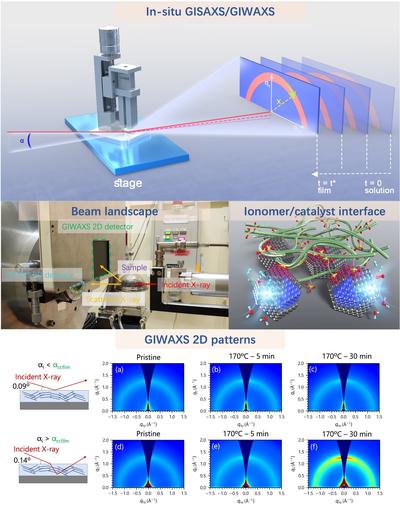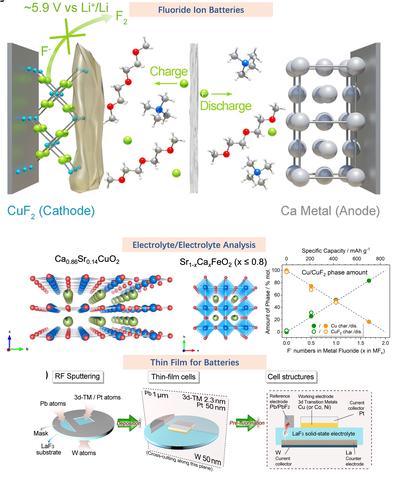Ionomer/Catalysts Interface
Ionomer loading in the catalyst layer, at sub-micrometer scales or smaller, facilitates proton transport and oxygen mass transport (proton and oxygen) at the catalysts/ionomer interface, where the chemical reaction takes place. The conformation and mobility of polymer chains are fundamentally influenced by interactions at the interface and spatial confinement. These factors concurrently alter the ionomer’s chemical and mechanical properties.

Fluoride Ion Batteries
Fluoride ion Batteries refer to an emerging class of solid-state batteries that leverage advanced fluoride-ion (F⁻) chemistry as an alternative to conventional lithium-ion systems. Unlike traditional Li-ion batteries, FIBs utilize fluoride ions shuttling between a metal-based anode (e.g., cerium, bismuth) and a fluoride-containing cathode (e.g., copper fluoride) through a solid-state electrolyte. This chemistry promises ultrahigh theoretical energy densities (up to 5x higher than Li-ion) due to the transfer of multiple electrons per ion and the lightweight nature of fluoride ions.
